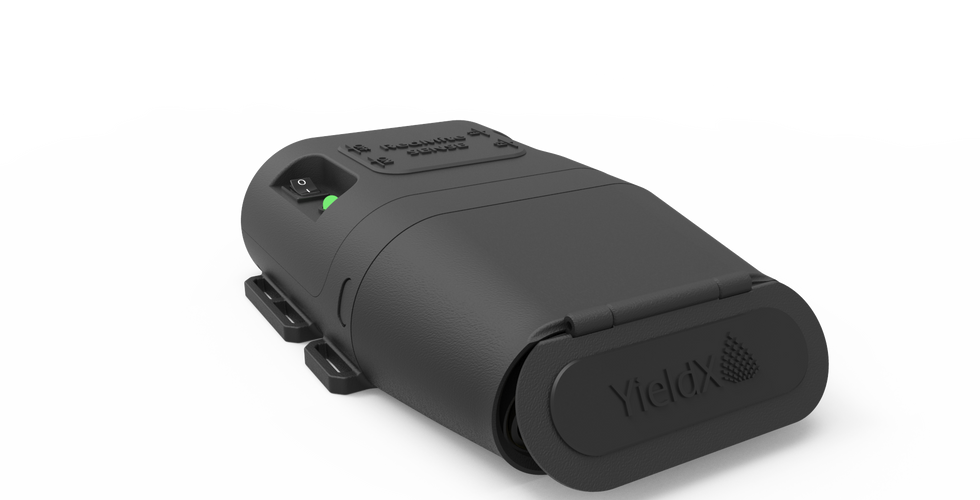Red mites and their effect on poultry production: The case of early detection.
- Lev Mikulitski
- Feb 6, 2023
- 6 min read
Updated: May 9, 2024
It is well-documented that poultry red mite is the most devastating parasite of laying birds globally, compared with the other parasites, i.e., fowl ticks/mites, etc. The red mite of poultry appeared red because of the engorgement of blood while feeding on the blood meal. Infestations of red mites pose severe risks to animal health and welfare that negatively impacts the production performance of poultry birds.

All forms of poultry production (i.e., backyard/ organic/intensive farming) are susceptible to mite infestation. The incidence of poultry red mite infection has increased throughout the world, and this trend is projected to continue. Recent epidemiological research indicates that red mite infests 83% of European farms. The Netherlands, Belgium, and Germany all have a prevalence of around 94%. However, the infestation rate of red mites in most countries is recorded as more than 90%. The global study is still lacking in information concerning Asia and South America, but according to many conversations with professionals it seems that the problem is valid in the same order of magnitude in these areas of the world as well, and that the economic damage is estimated at approximately 4 billion dollars a year.
Health consequences of mite infestation
Red mite infestations negatively affect both the egg production and hen welfare. It causes stress in the flock, leaving the birds very uncomfortable. During the night, they bite the hens, causing skin irritation, dermatitis and reduced feather quality. Some consequences include weight loss, lowered feed conversion and decreased egg production – sometimes by 20 per cent or more – as well as immune suppression.
Researchers suggest that the red mites feed on 200 micrograms of blood every time it goes on a hen. If you have 5,000 red mites on one single bird, they are taking 1g per day from the bird. If this is 50,000, it will be 10g and if it is 500,000 mites on one bird, which is not unusual in severe cases, it will be 100g. While one bird has about 130g to 140g of blood, Infestations can even lead to death. In exceptional cases, mortality can even reach 5% to 10%.
Moreover, the infestations of mites also produce intense feather-pecking, which facilitates cannibalistic behavior while promoting higher intakes of feed and water. Consequently, it adversely affects birds' health, welfare, and productivity. Thus, mite infestations are widely acknowledged by the scientific community as an animal welfare issue for these reasons.
Susceptibility to other diseases
The red mites of poultry act as a long-term carrier of bacterial and viral pathogens and serve as a reservoir of these pathogenic organisms. In addition, it is reported as a possible vector of infections, including chicken pox and Newcastle disease viruses.
The vectorial role of mites in sustaining pathogens on chicken farms is linked with the mite's capacity to persist between flocks and its tolerance in a fasting period for a prolonged duration. Thus, it provokes the Susceptibility of poultry birds to infectious diseases and ultimately compromises their health and welfare.
Control Measures
The growing demand for a sustainable strategy to combat mite infestations in chickens has been extensively highlighted. For this purpose, insecticides are mainly applied in poultry farms. In order to prevent chemical residues in eggs and meat, it is recommended that these chemicals should be applied at empty poultry farms. This poses critical concerns to quality control, in addition to the development of resistance due to under dosing of these insecticides. Thus, applying insecticides/pesticides is not an optimal choice for controlling mite infestations. As, it also negatively affects the welfare of bids.
In line with the findings of a research project (COREMI, aimed for 'Control of Red Mites') concluded that a single treatment protocol can't control these infestations. Hence, it's not a viable option to control the red mites. Therefore, the most effective methods for controlling mite infestations are recommended as follows;
Enhanced usage of the integrated pest management
Improved biosecurity protocols
Both of these are interlinked to each other. The careful monitoring of mite infestations only achieves these goals. Thus, it entails the significance of the early detection of red mites. As it's a fact that the prevention and early detection of poultry production diseases improve the performance of poultry birds.
The economic effects of red mites on poultry production
Red mite infestations severely affect the egg industry. Consequences of red mite infestation in a layer operation produce a negative impact on feed conversion ratio, reduced egg production, an increase in downgraded eggs and increased susceptibility to poultry diseases. The total cost of the economic damage is not trivial to calculate, since beyond the costs of treatment, damage to productivity, calculations of mortality rates and the degree of distribution of the mite itself, in many cases the red mite allows the entry of another biological hazard that also has an associated cost of treatment. From what is documented and reported by farmers, and active experts in veterinary medicine it is known that:
Red mite infestation has resulted in a significant rise in productivity losses. These losses severely impact the performance of layers and broilers.
These infestations negatively affect the conversion efficiency of feed, which compromises the growth and production performance of birds.
Moreover, it also enhances the bird's vulnerability to other infectious diseases, which may lead to increased production losses for poultry farmers.
It is also reported that the estimated cost w.r.t. mite infestation is around €0.60/bird/year in the Netherlands (i.e., €0.45 as a production loss, the remaining one considered as direct cost of medical treatment). It is important to note that these costs, which originate from studies done before the COVID-19 period, are biased downwards. Today, for example, treatment prices reach about €0.2-€0.25. To maximize treatment capabilities, it is necessary to provide at least 2 treatments during the year, which significantly increases the total cost of treatment.
The overall control cost of mite infestation for every layer head depending on the housing system, the infestation intensity and the control methods used can go far beyond €1 per laying hen per year, and quite a few times it even reaches €2.
So, poultry farmers need effective prevention and control measures to keep their production losses to a minimum.
Importance of early detection of diseases
It is evidenced that implementing recommended preventive measures, i.e., proper biosecurity and hygiene practices, can reduce the density of mite populations at poultry farms by 50-70%. The primary goal of prevention at poultry farms is earlier disease prediction and detection. Thus, it could be a way forward for the earlier detection of the mites.
Recent scientific advances in the poultry sector have fostered the application of cutting-edge technologies for the rapid detection and prediction of mites and other poultry diseases. The implementation of artificial intelligence-based sensors for the earlier detection of the mites could reflect these technologies. Hence, it is an optimal strategy to detect and restrict the infestations before spreading them. Because it can reduce the medication expenditure of infected birds and lower their production cost. Ultimately, it results in the improved production potential of the poultry birds while ensuring higher farmer profitability.
And this is exactly the motivation behind the launch of YieldX's "RedMite Sense" solution, the whole purpose of which is AI-based early detection of red mites in laying farms. The solution, which will be presented for the first time at VIV Asia 2023, will allow the early detection of red mites in week 3-4 from the beginning of the infestation. The YieldX solution is unique in that it will for the first time present an active approach to the early detection of the earth mite through continuous detection, real-time alerts on the presence of the mite and the ability to share critical information with every third party.
Average savings on early detection of red mites in poultry houses
As it has been described previously, earlier detection of red mites can save capital and improve farmers' profitability. A farmer running a small business of 240,000 birds (4 houses) will experience a loss of income of €54,200 annually for a single house due to lost productivity and treatment costs. In this case, the expected aggregate cost of damage can reach about €216,000 a year. For a farm of this size, this is by all accounts a significant financial loss.
In the case of significant early detection, (i.e., 3-4 weeks sinse the begining of infestation), the effect will be both on the type of treatment provided, as it will be possible to provide fairly effective treatment at costs that can be half of the previous cost and also the loss of productivity will not be significant and can be reduced to a half or less. In this case, the expectation is to reduce the cost of damage by at least half. But the prevention economy does not end only with the early detection of red mites. It is practically a potential prevention of many more diseases that can find their way into the farm through the red mite.
Product ilustration: YieldX's RedMite Sense device.
Finally, by reducing treatment costs, increasing productivity, reducing bird mortality and improving product quality, early detection of red mites can help increase the overall profitability of a poultry operation. The application of new technologies, such as the YieldX's RedMite Sense, including the use of smart sensors alongside the capabilities of machine learning and artificial intelligence can accelerate the introduction of new biosecurity practices to farms and thus significantly improve animal welfare, contribute to the overall farm health and profitable farm operation.








Comments